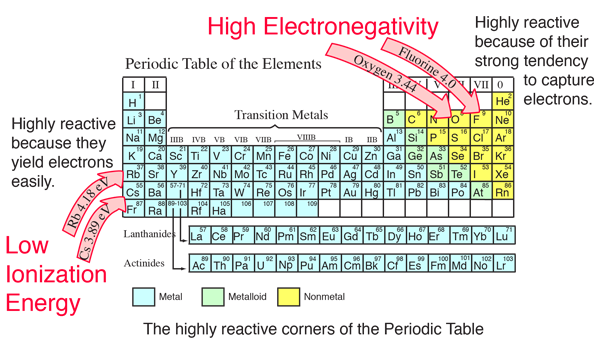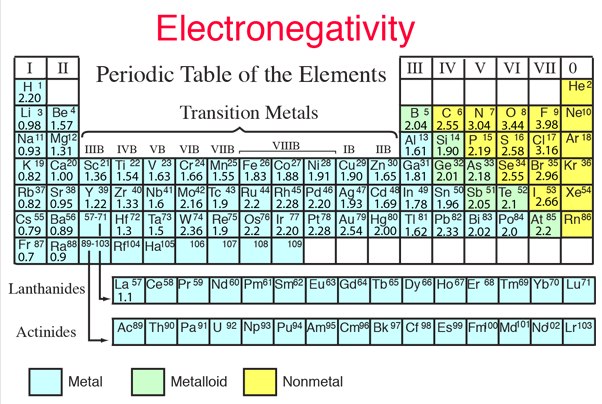Ionization Energy and Electron Affinity
The ionization energy or ionization potential is the energy necessary to remove an electron from the neutral atom. It is a minimum for the alkali metals which have a single electron outside a closed shell. It generally increases across a row on the periodic maximum for the noble gases which have closed shells. For example, sodium requires only 496 kJ/mol or 5.14 eV/atom to ionize it while neon, the noble gas immediately preceding it in the periodic table, requires 2081 kJ/mol or 21.56 eV/atom. The ionization energy can be thought of as a kind of counter property to electronegativity in the sense that a low ionization energy implies that an element readily gives electrons to a reaction, while a high electronegativity implies that an element strongly seeks to take electrons in a reaction.
The electron affinity is a measure of the energy change when an electron is added to a neutral atom to form a negative ion. For example, when a neutral chlorine atom in the gaseous form picks up an electron to form a Cl- ion, it releases an energy of 349 kJ/mol or 3.6 eV/atom. It is said to have an electron affinity of -349 kJ/mol and this large number indicates that it forms a stable negative ion. Small numbers indicate that a less stable negative ion is formed. Groups VIA and VIIA in the periodic table have the largest electron affinities.

| Graph of ionization energies of the elements |
| Table of electron affinities |
Bond concepts
| HyperPhysics***** Chemistry | R Nave |
